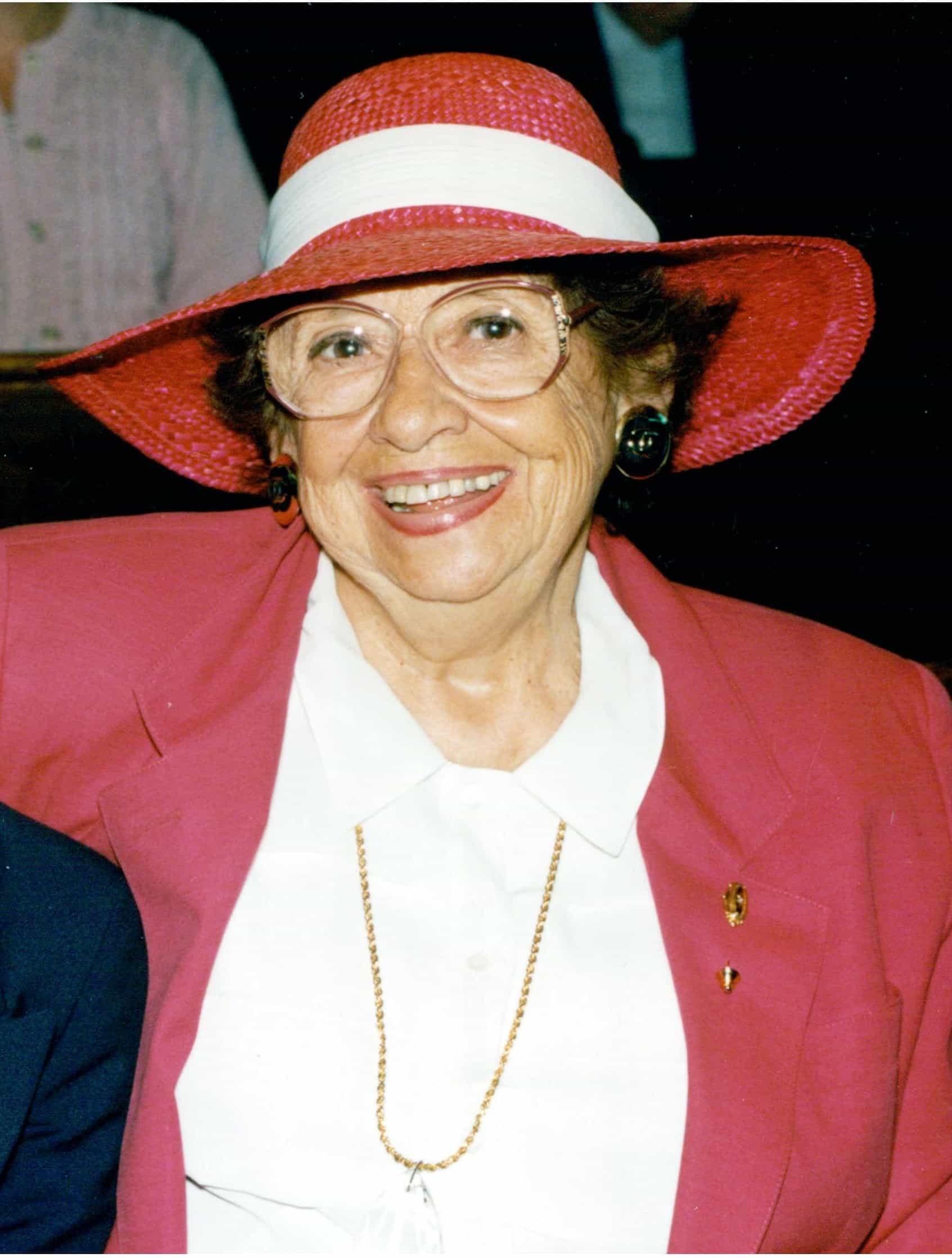HOURIG PAPAZIAN-SAHAGIAN (April 19, 1926-November 23, 2022)

Archbishop Anoushavan Prelate and the Executive and Religious Councils have learned with sorrow of the passing of Ms. Hourig Papazian-Sahagian on November 23, at age 96, former Executive Director of the Armenian National Educative Committee (ANEC) for many years. She is survived by her three sons, Dork Sahagian, Aris Sahagian, and Garen Sahagian, daughters-in-law, and eight grandchildren. She also leaves her sister, Siran Grigorian, and her extended family, and was pre-deceased in 2016 by Robert Vahe Sahagian, her husband for 63 years.
Ms. Hourig Seda Papazian-Sahagian was born into a prominent family in New York City on April 19, 1926. Her father Vahan Papazian, a gifted artist-craftsman, was highly respected for his contributions and faithful dedication to Armenian American political and cultural life. His family included two clergymen, Housig and Nercess Papazian, and two renowned names: the literary figure and critic Vrtanes Papazian (1866-1920) and an uncle, Vahan Papazian (1876-1973), known as Goms, a renowned revolutionary leader and author. Her mother, Arpi Melik-Stepanian, traced her lineage back to the princely Meliks of Karabagh and was recognized for her work in the Armenian National Committee to Aid Homeless Armenians (ANCHA) to relocate Armenian refugees after World War Il.
During her six decades-long career as an educator, Ms. Papazian-Sahagian’s contributions included numerous educational innovations for Armenian schools in the United States and abroad. In 1950, the famous writer and educator Levon Shant, director of the Armenian College (Jemaran) of Beirut, learned of Hourig’s goals and invited her to travel to Lebanon to create and administer an early childhood department as a demonstration school for teaching interns. She broke new ground in instituting American educational philosophy and methodology at the college, which was then French-based. Hourig overcame obstacles of profound differences in educational, psychological, and social traditions and practices. Upon her return to the States, she resumed her career as music educator at Clifton High School in New Jersey. In the late 1970s, she was appointed to the position of principal of the Armenian School of New Jersey (now the Hovnanian Armenian School) during its founding years.
Throughout the 1960s, Ms. Papazian-Sahagian had worked on various Prelacy projects at the invitation of the Prelates, Archbishops Hrant Khatchadourian and Karekin Sarkissian, later Catholicos Karekin II of Cilicia. She became a charter member of the Armenian National Education Committee, and helped to set in motion programs and studies. In the early 1980s, she was recommended by the Prelate, Archbishop Mesrob Ashjian, for the position of Executive Director of ANEC.
While assessing educational gaps within the ANEC offering, she created programs for two segments of the Armenian American community often overlooked- teenagers and adults. To that end, she and Dr. Steve Checkosky co-founded the Siamanto Academy for high school students, offering college level courses in Armenian area studies. Ms. Papazian-Sahagian designed an Armenian history curriculum for the mature learner and added these courses to ANEC programs. Both language and history class sessions enjoyed unprecedented success with a portion of the Armenian American community which had not been exposed to Armenian studies earlier in youth. The program became accredited by the American Council on Education. She succeeded in enlisting notable professors to teach at the Academy, including Archbishop Anoushavan, Dr. Herand Markarian, and Mr. Haroutune Misserlian along with guest lecturers. A summer studies program was initiated in 1987 when 35 Siamanto Academy students went to Armenia for an 18-day study tour of Armenia.
In addition to numerous grade-level curricula prepared with contemporaneous teaching philosophy, she was the motivating force behind the creation of the “Historical Atlas of Armenia” and served as co-editor with Ardashes Hamparian of “Armenia in Ancient and Medieval Times” by Robert Bedrosian; “A Course in Modern Western Armenian” and “Armenian Dictionary in Transliteration” by Thomas J. Samuelian. Together with Levon Shant during her years in Beirut, she was responsible for the original model of the well-known graded textbook series, “Pokrig Anin” and “Bedign ou Kayuh.”
As a musician, she performed on the piano at Carnegie Hall and taught high school music as well as offering private piano lessons. Hourig performed Armenian songs and dances in authentic Armenian costumes with her dear friend Sosy Kadian. They performed at uncounted Armenian churches and cultural venues, accompanied by musicians Onnik and Ara Dinkjian, Johnny Berberian and many others. These songs and dances inspired Ms. Papazian-Sahagian to write longer stories about the characters in the songs. Then, in a major effort to preserve and advance Armenian culture, she founded the theater group “The Way We Were.” She wrote and directed a series of musical plays that highlighted Armenian culture and history. “The Reluctant Bride,” “Hello, Ellis Island,” and “Hye Legion: The Gamavor Story” were a few of the plays she took on the road to church halls throughout the East Coast performing to the delight of audiences, young and old. With rehearsals at her house each Wednesday, the troupe of singers and dancers she assembled carried the torch of Armenian culture into the 21st century.
